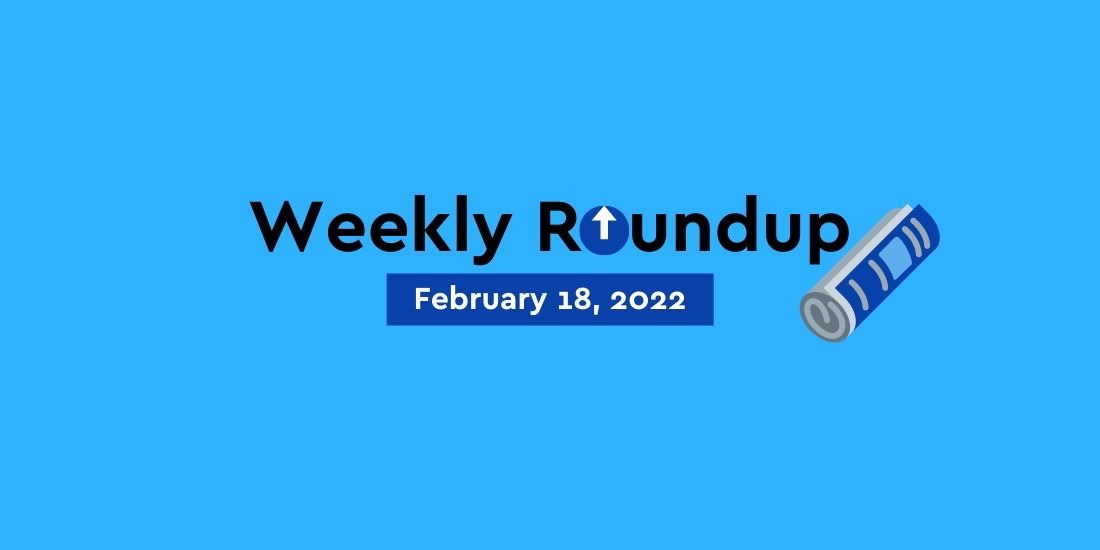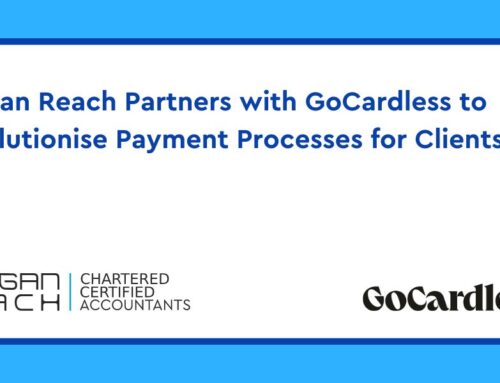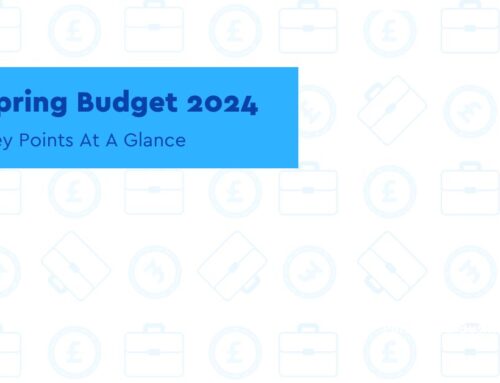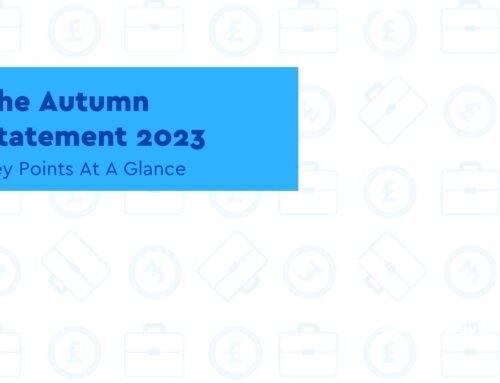News – Employers
Rates and thresholds for employers 2022 to 2023
Use these rates and thresholds when you operate your payroll or provide expenses and benefits to your employees.
Key Points
- You normally operate PAYE as part of your payroll so HMRC can collect Income Tax and National Insurance from your employees
- Your payroll software will work out how much tax and National Insurance to deduct from your employees’ pay
Unless otherwise stated, the following figures apply from April 6, 2022 to April 5, 2023.
Content for article then taken from https://www.gov.uk/guidance/rates-and-thresholds-for-employers-2022-to-2023
News – Landlords
Five changes in buy-to-let tax landlords should know about for 2022
Key Points
- Landlords now have 60 days to report and pay capital gains tax when they sell a property
- Landlords who buy properties in 2022 will need to pay normal stamp duty land tax rates
- Plus, they’ll also pay the 3% surcharge for second homes and buy-to-let properties
There are a number of new buy-to-let tax changes landlords should be aware of in 2022.
From the buy-to-let tax relief you can claim and capital gains tax, to stamp duty rates and Making Tax Digital, here’s a run-down of what to watch out for this year.
Buy-to-let income tax rates 2022
So what exactly are the individual income tax rates and bands for 2021-22? Your personal allowance is the amount you can earn before you start paying income tax.
Currently this is £12,570 – an increase of £70 from last year, and it’s set to remain at the same level for five years.
For the 2021-22 tax year, landlords will pay 20 per cent tax on buy-to-let income between £12,571 and £50,270.
The higher rate threshold for rental income has increased to £50,271, which is the point at which you start paying 40 per cent tax on your profits.
The additional rate (45 per cent) threshold remains unchanged at £150,000.
This buy-to-let tax calculator from Commercial Trust can give you an idea of how much your next tax bill could be.
Time to pay capital gains tax on buy-to-let extended
After several changes in recent years, it was announced in the Autumn Budget that landlords now have 60 days to report and pay capital gains tax when they sell a property.
The reporting period has been doubled from 30 days, although it remains well below the maximum 22-month period that was in place before April 2020.
There was speculation that the government would increase capital gains tax rates after a report by the Office for Tax Simplification. However, it seems they’ll be left unchanged for now.
Five-year anniversary of buy-to-let mortgage tax changes
For the 2021-22 tax year, landlords will once again get a 20 per cent tax credit on interest payments instead of deducting mortgage expenses from rental income.
This year marks the fifth anniversary of when the controversial tax changes started, with buy-to-let mortgage tax relief reduced by 25 per cent each year until it reached zero in 2020-21.
To help mitigate the rules, many landlords have set up a limited company when buying a new rental property.
This is because you’ll be subject to corporation tax rates of 19 per cent, rather than the higher individual income tax rates.
Recent analysis of Companies House data by estate agency Hamptons shows that more buy-to-let companies were set up in 2021 than in any previous year.
Making Tax Digital for VAT-registered businesses
From April 1 2022, landlords with a VAT-registered business with a taxable turnover below the VAT threshold of £85,000 will need to keep digital records and use accounting software to file their tax return.
All Self Assessment taxpayers will need to comply with Making Tax Digital for income tax from April 2024.
Buy-to-let stamp duty rates return to normal
In response to the Covid-19 pandemic, the government introduced a stamp duty holiday in July 2020.
Buy-to-let landlords who bought properties during the stamp duty holiday made an average saving of £2,000.
It was in place until October 2021, when stamp duty rates returned to normal. This means landlords who buy properties in 2022 will need to pay normal stamp duty land tax rates, plus the three per cent surcharge for second homes and buy-to-let properties.
Here’s an overview of stamp duty rates for property investors in England:
| Property price | Stamp duty rate |
| £0 – £125,000 | 3% |
| £125,001 – £250,000 | 5% |
| £250,001 – £925,000 | 8% |
| £925,001 – £1.5 million | 13% |
| £1.5 million + | 15% |
The rules are slightly different for landlords in Wales and Scotland.
What about other buy-to-let regulation changes?
As well as tax changes, there are further updates to regulations that landlords should know about for 2022.
As part of the government’s Levelling Up White Paper, several rental reforms have been proposed:
- the end of Section 21 evictions
- a national landlord register
- more fines and bans for rogue landlords
- a minimum standard for all rental properties
There are also plans to increase the minimum energy efficiency standard and extend the rules on carbon monoxide detectors in rental properties.
This article was derived from: https://www.simplybusiness.co.uk/knowledge/articles/2022/02/buy-to-let-tax/
News – VAT
Business leaders call for VAT cut to be held
Key Points
- From April, the VAT increase is set to happen alongside a rise in the national minimum wage
- This also includes changes to business rate relief and an end to the rent moratorium
More than 250 business leaders have urged the Government to keep VAT at 12.5% to help the recovery of fragile hospitality and leisure firms.
In a letter to Chancellor Rishi Sunak 261 hospitality and leisure business leaders warn that April’s planned rise to 20% will “exacerbate the squeeze on household finances”.
They say customers are feeling the pinch from increasing costs while firms face higher prices for labour, energy and food and drink supplies.
They are calling on Mr Sunak to rethink the increase as under these circumstances “the reduced rate is ever more important”.
Business leaders from Apex Hotels, BaxterStorey, Bourne Leisure, Big Table Group, Caffe Nero, Center Parcs, Cote, Fuller’s, Greene King, Hilton, IHG Hotels and Resorts, JD Wetherspoon, Loungers, Marston’s, Mitchells & Butlers, Moto Hospitality Nobu, Parkdean Resorts, Pho, Pizza Express, Pizza Hut, Punch Pubs, Revolution, Rekom, The Restaurant Group The Savoy Hotel Group, Wagamama and Young’s, are among those who have signed the letter.
A major concern of the impact of the VAT rise is that businesses will have no choice but to significantly raise their prices, further fuelling inflation across the economy.
Business leaders also fear that April could be a “cliff edge” for the hospitality industry, as the VAT increase is set to happen alongside a rise in the national minimum wage, plus changes to business rate relief and an end to the rent moratorium.
The letter says: “The reduced rate also bolsters deliverability of many of the Government’s key policies – including levelling up, high street regeneration, employment and skills growth, and investment in net zero – allowing our sector to fully play its part in an economic recovery.
“The Government has rightly celebrated being the most open nation in Europe following the Omicron variant.
“As we look to revive our tourism, maintaining a reduced rate of VAT is imperative, as it simply brings us in line with the levels of VAT levied in our competitor European nations.”
UK Hospitality chief executive Kate Nicholls said: “This is about so much more than an extension to temporary measures in the face of the challenges brought by Covid, it’s about working to establish the right tax level for our world-class hospitality and tourism industries.
“It is vital, in the interests of competitiveness, job creation, growth and ensuring hospitality and tourism play their full part in driving the economic recovery.”
A Treasury spokesperson said: “We’ve supported hospitality jobs and businesses throughout the pandemic with our £400 billion package of funding and continue to do so.
“We’ve always been clear that the lower rate of VAT was a temporary measure to support businesses as they recover and thanks to the strength of our fantastic vaccine programme, which has enabled restrictions to be lifted and the economy to reopen, it’s right that our package of support reflects this.”
This article was derived from Yahoo Finance: https://uk.finance.yahoo.com/news/more-250-hospitality-business-leaders-192318085.html
News – National Insurance
National Insurance holiday for employers of veterans
Key Points
- Employers who hire veterans will be eligible for a zero-rate of secondary NICs for up to 12 months
- You’ll apply the zero rate up to the Veterans upper secondary threshold
- The new guidance explains the qualifying rules and claims process for both 2021 and 2022 tax years
GOV.UK guidance is now available for employers wishing to take advantage of the National Insurance holiday for employers of veterans.
Introduced on April 6, 2021, employers who hire former members of the UK regular armed forces during the first year of their civilian employment, will be eligible for a zero-rate of secondary National Insurance contributions for up to 12 months.
You’ll apply the zero rate up to the Veterans upper secondary threshold.
Employers will be able to claim this relief through Real Time Information (RTI) submissions from April 6, 2022 and any earnings of qualifying veterans hired from April 6, 2021 will be eligible for retrospective NICs relief.
The new GOV.UK guidance explains the qualifying rules and claims process for both 2021 and 2022 tax years.
To claim the relief, you’ll need to confirm that the veteran qualifies.
Employees that qualify
An employee qualifies as a veteran if they have either:
- served at least one day in the regular armed forces
- completed at least one day of basic training
The relief is available to a veteran who has started their first civilian job regardless of when they left the regular armed forces.
Limits on the relief
The relief only applies to the part of the employee’s earnings below the Veterans upper secondary threshold.
Qualifying period
The qualifying period begins on the first day of the veteran’s first civilian employment since leaving the regular armed forces and ends 12 months later.
The 12-month qualifying period is set and does not change if either their:
- employment ceases
- employer changes
This means that where an employee:
- has more than one job each employer can claim the relief at the same time for the same employee
- ceases one employment and starts another, the subsequent employer can claim the relief until the end of the qualifying period, but the employer will need to find out the date when the veteran was first employed
Claims for the 2021 to 2022 tax year for National Insurance category A
Claims through payroll reporting
You’ll claim the relief by submitting a revised Final Payment Submission (FPS) after 6 April 2022 using National Insurance category letter V for qualifying veteran employees.
Claims outside of payroll reporting
You’ll need to write to HMRC from 6 April 2022 to request relief if you are unable to self-serve through payroll reporting. Mark your letter with the heading ‘Overpaid National Insurance contributions’.
You’ll also need to tell us:
- your employee’s name, date of birth and National Insurance number
- why you are reclaiming the veteran’s relief
- the period you have overpaid in
- that you are claiming for a qualifying veteran and have evidence to show this (HMRC may ask to see this at a later date)
- the account number, sort code and account name for the bank account where you want the refund to be paid
Claims for National Insurance category letters other than A
For the tax year 2021 to 2022 you should continue to apply the standard category letter for the tax year where there is no veterans equivalent for categories B, T, C, W, J, Q.
If you are eligible for the relief, you’ll need write to HMRC at the end of the tax year to claim the relief.
You’ll need to tell us:
- your employee’s name, date of birth and National Insurance number
- why you are reclaiming the relief (for example, because you are claiming for an employee over state pension age)
- that you cannot amend through payroll reporting
- the period you have overpaid in
- that you are claiming for a qualifying veteran and keep evidence (HMRC may ask to see this at a later date)
- the account number, sort code and account name for the bank account where you want the refund to be paid
Record keeping
You need to keep records that show:
- that an employee is a qualifying veteran
- the start date of the veteran’s first civilian employment
You can ask the veteran for their:
- discharge papers from HM Armed Forces
- employment contract with their previous employment (in order to determine the start date)
- identification card (which shows their time in the armed forces)
- letter of employment or contract with HM Armed Forces
- P45 from leaving HM Armed Forces
You’ll need to keep records that show the employee’s eligibility for at least 4 years.
Claim National Insurance contributions relief for veterans as an employer.
This article was sourced from gov.uk guidance: https://www.gov.uk/guidance/claim-national-insurance-contributions-relief-for-veterans-as-an-employer
Latest Snippets
HMRC issues marriage allowance reminder
HMRC is urging married people around the country to take advantage of a tax break worth hundreds of pounds before the end of the 2021/22 tax year.
Spouses and civil partners can sign up to the marriage allowance if one partner’s income is under the personal allowance (£12,570 in 2021/22) and the other is a basic-rate taxpayer.
Eligible couples can transfer 10% of their tax-free personal allowance to their partners, worth up to £1,260 in 2021/22) meaning they can reduce the tax they pay by up to £252 a year.
Couples can apply any time and backdate their claims for any of the four previous tax years.
Businesses encouraged to have their say on future of customs
The government is asking businesses, traders, and the public to give their opinion on how the customs system is working and what improvements they would like to see.
The government will be asking businesses and the border industry for their suggestions on:
Improvements to help traders access a quality customs intermediary sector
How the benefits of the Simplified Customs Declarations Process (SCDP) can be expanded
How the Transit facilitation can be improved
The call for evidence will run until Monday May 2, 2022
Get In Touch
At Morgan Reach, we understand every business needs a little help now and again-especially when it comes to the financial side of things. Therefore, to help our clients and visitors we endeavour to cover as much of the business news as possible. If you are self-employed or run a business and need assistance and advice on how these news could make a difference to you or your business, feel free to get in touch with the experts at Morgan Reach. Our business growth experts at Morgan Reach will guide you through what support is available for you or your business as well as the latest news that may affect you.







